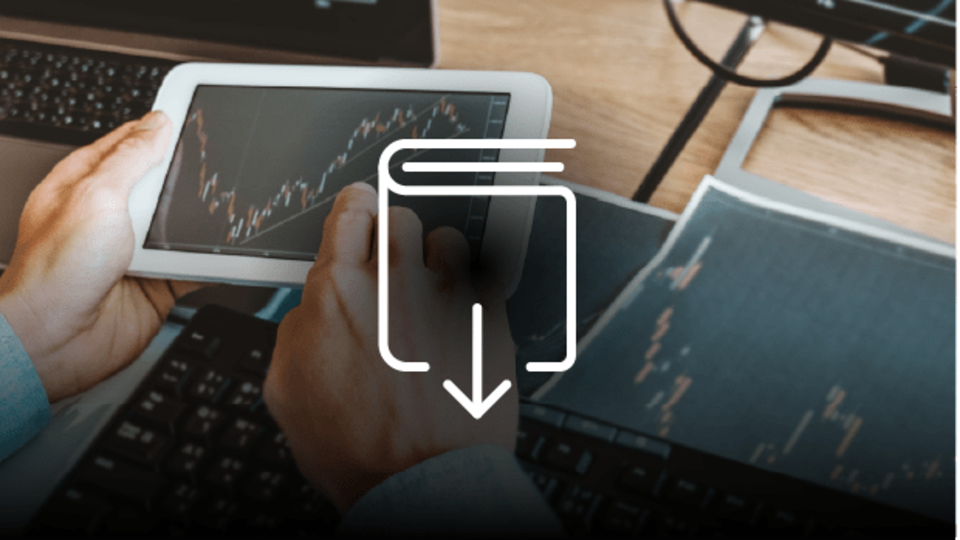ABS East Recap: 5 Takeaways on LIBOR Transition
7 October 2019At the annual conference, four panels of experts agreed that organizations that aren’t preparing for the LIBOR transition are in for a rude awakening on January 1, 2022.

Pictured above: (L-R) Moderator Ellen Hefferan of LSTA, moderated “Operationalizing the LIBOR Transition” with panelists Nitish Idnani of Deloitte & Touche LLP, Cindy Tjoe of KPMG LLP, Linc Finkenburg of Perkins Cole and (obscured) Ben Jordan of Wilmington Trust.
On September 22-24, 2019, SS&C Intralinks attended the 25th edition of ABS East in Miami Beach, FL. One of the largest annual global gatherings of the securitization industry, the event attracts more than 5,000 professionals, including analysts, regulators, fixed income investors and trustees. This year’s agenda discussed the outlook of the ABS, CLO, RMBS and CMBS markets amid potential economic headwinds, U.S.-China trade tensions and the looming transition out of LIBOR, which stands for the London Interbank Offered Rate.
Four out of 40+ sessions were focused on LIBOR, and there was clearly a lot of interest in the topic, given the intense discussions in and out of these sessions. Here are five key observations about LIBOR discussed at ABS East.
1. First things first: What’s replacing LIBOR? A top concern was what the new benchmark would be and how it would be calculated. Many poked holes in the logic surrounding both topics. For example, those advocating for SOFR as the replacement rate for USD LIBOR were met with criticism from attendees who pointed out recent treasury repo rate spikes to almost 10 percent and the potential for further spikes in the coming years. During the panel “Operationalizing the LIBOR Transition,” Nitish Idnani, advisory principal at Deloitte & Touche, said, “The standardization of the market convention – that’s the work that’s ahead of us. A number of factors need to be agreed … and all of that will be different by product, even the fallback language.”
2. The government and regulatory authorities are laying the groundwork. A few days before the conference, the Alternative Reference Rates Committee (ARCC), a group convened by the U.S. Fed and comprised of private sector market participants and industry regulators, published Practical Implementation Checklist for SOFR Adoption, a checklist to help banks impacted by LIBOR prepare for the transition.
While issues regarding standardization and protocol need to be agreed upon, the LIBOR panelists unanimously agreed that important work needs to be done right now.
3. Many organizations still don’t seem to be worried about operational impact … yet. Until regulatory authorities settle on the final replacement rate (or rates), banks and market participants won’t focus on reviewing and amending contracts. It appears that the replacements might differ across markets: i.e. SOFR for U.S., SONIA for U.K., €STR for the EU, TONAR for Japan, SARON for Switzerland. Some attendees expect there could even be an implied conversion from LIBOR to the final new rate, so there may be less preparation and effort than expected. Until decisions about a final rate (or rates) are made, most appear to be fine with a “wait-and-see approach.”
4. Meanwhile, the clock is ticking … and there’s much to do right now. Regardless of what the final replacement rate/s is/are, there was consensus among LIBOR subject matter experts that there’s a whole host of activities banks and issuers can start doing now. According to Nitish Idnani, “There are technology and operational processes impacted; [it’s important to] make sure trading systems have new data feeds and data sources, technology supports the fallback language, third party providers are ready when the time comes for transition. It’s important to think about interest rate calculation but certainly there is broader front-to-back impact to processes and technology.” Panelist Cindy Tjoe, managing director at KPMG, agreed. “What we’ve done with clients is initiate discussions, take a look at their business models, understand their operational exposures as well as models and systems that have dependencies on LIBOR and map those out. We see 2019 as mobilizing the project plan, 2020 will be the implementation stage as standardizations become clearer … and 2021 [will be focused on] continuing to test and validate.”
5. Reputations are at stake. Banks and issuers should already be preparing; once the deadline comes around, there won’t be room for error. So, while that deadline is more than two years away, we don’t recommend procrastinating. As we wait for final decisions on the rate (or set of rates), scope out the work to be done around contracts, and start moving these documents – which are potentially in the thousands – into organized workspaces. Setting up an efficient workflow and a secure mechanism for sharing contracts will be key to ensuring a smooth transition out of LIBOR.
Conclusion
While issues regarding standardization and protocol need to be agreed upon, the LIBOR panelists unanimously agreed that important work needs to be done right now. Nitish Idnani spoke about how leveraging technology can create efficiency. However, it needs to be identified, tested and validated in order to determine gaps before a solution can be put into production. This process takes time and must be done methodically. Intralinks recently held an insightful LIBOR transition webinar. Two of our LIBOR subject matter experts – Dominic Brown, field CTO and Paul Loefstedt, senior account technology specialist – discussed challenges with the current state and our solutions. I invite you to watch it here and learn how we can help with your organization’s LIBOR transition.

Turner Hopkins
NYC-based Turner Hopkins joined Intralinks in March 2019. Turner is responsible for all business with banks in the U.S. and Canada. He oversees a sales team that’s focused on helping financial market participants solve the challenges of securely sharing information. Turner has spent most of his career working in Fintech. Prior to joining Intralinks, he was responsible for sales and partnership management for Qlytics, an artificial intelligence startup. Previously, he held multiple roles at Moody’s Analytics where he sold credit risk management solutions to capital markets participants.


